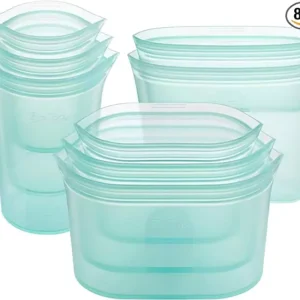Are you planning to buy home products, but not sure how to choose the best ones to suit your needs? Worry not! We’ve got you covered. There are several essential factors you should consider, such as budget, quality, functionality, and aesthetics. To ensure you make informed decisions for your home, we’ll discuss what you should keep in mind before purchasing home products in this article. So, read on and make a wise choice for your home!
1. Assess Your Needs
The first step to shopping for home products is to assess your needs. Consider what items you need for your home and why. This can include anything from furniture and home decor to appliances and kitchen gadgets. Take note of any problem areas in your home that could benefit from a new product or upgrade, and make a list of what you need.
When assessing your needs, consider the following:
- Your lifestyle: Think about your daily routine and how you use your home. Do you entertain often? Do you work from home? Do you have children or pets? Your lifestyle will greatly affect what products you need for your home.
- Your budget: Determine how much you’re willing to spend on each product. This will help you narrow down your options and avoid overspending.
- Your style: Consider your style and what you want your home to look and feel like. This will help guide your choices when it comes to home decor and other aesthetic items.


>> Home Makeover 101: Choose the Right Paint Color and Wow Your Guests!
2. Do Your Research
Once you’ve assessed your needs and created a list of what you need, it’s time to start researching. This is especially important for big-ticket items like furniture and appliances, but it can also be helpful for smaller items like home decor and kitchen gadgets.
When researching, consider the following:
- Product reviews: Look for product reviews from reputable sources to get an idea of how well the product performs and how durable it is.
- Brand reputation: Consider the brand’s reputation and whether they have a history of producing quality products.
- Product features: Look at the product’s features and consider whether they meet your needs.
- Price: Compare prices from different retailers to find the best deal.
3. Consider Quality
Quality is a significant factor to consider when shopping for home products. While it may be tempting to go for cheaper options, investing in quality products can save you money in the long run. Quality products tend to last longer and require less maintenance and repairs.
When considering quality, look for the following:
- Material: Consider the material the product is made from. Quality materials tend to be more durable and resistant to wear and tear.
- Construction: Look at the product’s construction and consider whether it’s well-built and sturdy.
- Warranty: Check to see if the product comes with a warranty or guarantee. This can give you peace of mind and protect your investment.


4. Think About Functionality
Functionality is another important factor to consider when shopping for home products. Consider how well the product will perform its intended function and whether it will make your life easier.
When thinking about functionality, consider the following:
- Ease of use: Consider how easy the product is and whether it requires any special skills or knowledge.
- Compatibility: If you’re purchasing an accessory or replacement part, make sure it’s compatible with the existing product.
- Energy efficiency: Consider whether the product is energy-efficient and whether it can help you save money on your energy bills.
5. Don’t Forget Aesthetics
While functionality and quality are important factors to consider when shopping for home products, aesthetics also play a role. Your home should be a reflection of your style, so it’s important to choose products that fit your aesthetic preferences.
When considering aesthetics, consider the following:
- Colour and pattern: Consider the colour and pattern of the product and whether it fits with your existing decor.
- Style: Consider the style of the product and whether it fits with the overall style of your home.
- Texture: Consider the texture of the product and whether it adds visual interest to your home.
- Size and scale: Consider the size and scale of the product and whether it fits in with the proportions of your room.


6. Consider the Long-Term Costs
When shopping for home products, it’s important to consider the long-term costs associated with the product. This includes not only the upfront cost but also any maintenance or repair costs that may be associated with the product.
When considering long-term costs, consider the following:
- Maintenance and repair: Consider how much maintenance and repair the product will require over time and factor this into the overall cost.
- Energy efficiency: Consider how energy-efficient the product is and whether it can help you save money on your energy bills over time.
- Lifespan: Consider how long the product is expected to last and factor this into the overall cost.
7. Don’t Be Afraid to Ask for Help
Shopping for home products can be overwhelming, especially if you’re not sure what you’re looking for. Don’t be afraid to ask for help from friends, family, or professionals. A design consultant or home improvement expert can provide valuable advice and guidance when it comes to choosing the right products for your home.
When seeking help, consider the following:
- Experience: Look for someone with experience in home design or improvement.
- References: Check references or reviews to ensure that the person you’re working with has a history of providing quality advice and guidance.
- Compatibility: Make sure that the person you’re working with understands your style and preferences.
Wrapping Up
Shop smart for your home products by assessing your needs, researching thoroughly, considering quality and cost, and seeking help when needed. Enjoy the process and your home will thank you.
-

 IDEATECH Reusable Food Storage Bags$21.00
IDEATECH Reusable Food Storage Bags$21.00 -

 SPLF Reusable Silicon Storage Bags$14.00
SPLF Reusable Silicon Storage Bags$14.00 -

 Lerine Reusable Silicon Bags$13.00
Lerine Reusable Silicon Bags$13.00 -

 Zip Top Reusable Silicone Bags$89.00
Zip Top Reusable Silicone Bags$89.00 -

 HOMELUX THEORY Reusable Ziploc Silicone Bags$24.00
HOMELUX THEORY Reusable Ziploc Silicone Bags$24.00 -

 Stasher Silicone Reusable Food Storage Bags$45.00
Stasher Silicone Reusable Food Storage Bags$45.00 -

 Chef’s Path Food Storage Containers, 24 Piece$59.99
Chef’s Path Food Storage Containers, 24 Piece$59.99 -
Product on sale

 Vtopmart Airtight Food Storage Containers, 7 PiecesOriginal price was: $39.99.$26.99Current price is: $26.99.
Vtopmart Airtight Food Storage Containers, 7 PiecesOriginal price was: $39.99.$26.99Current price is: $26.99.







